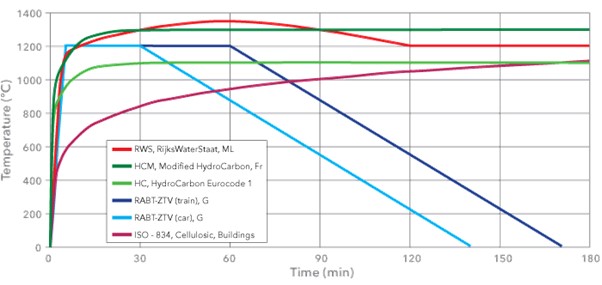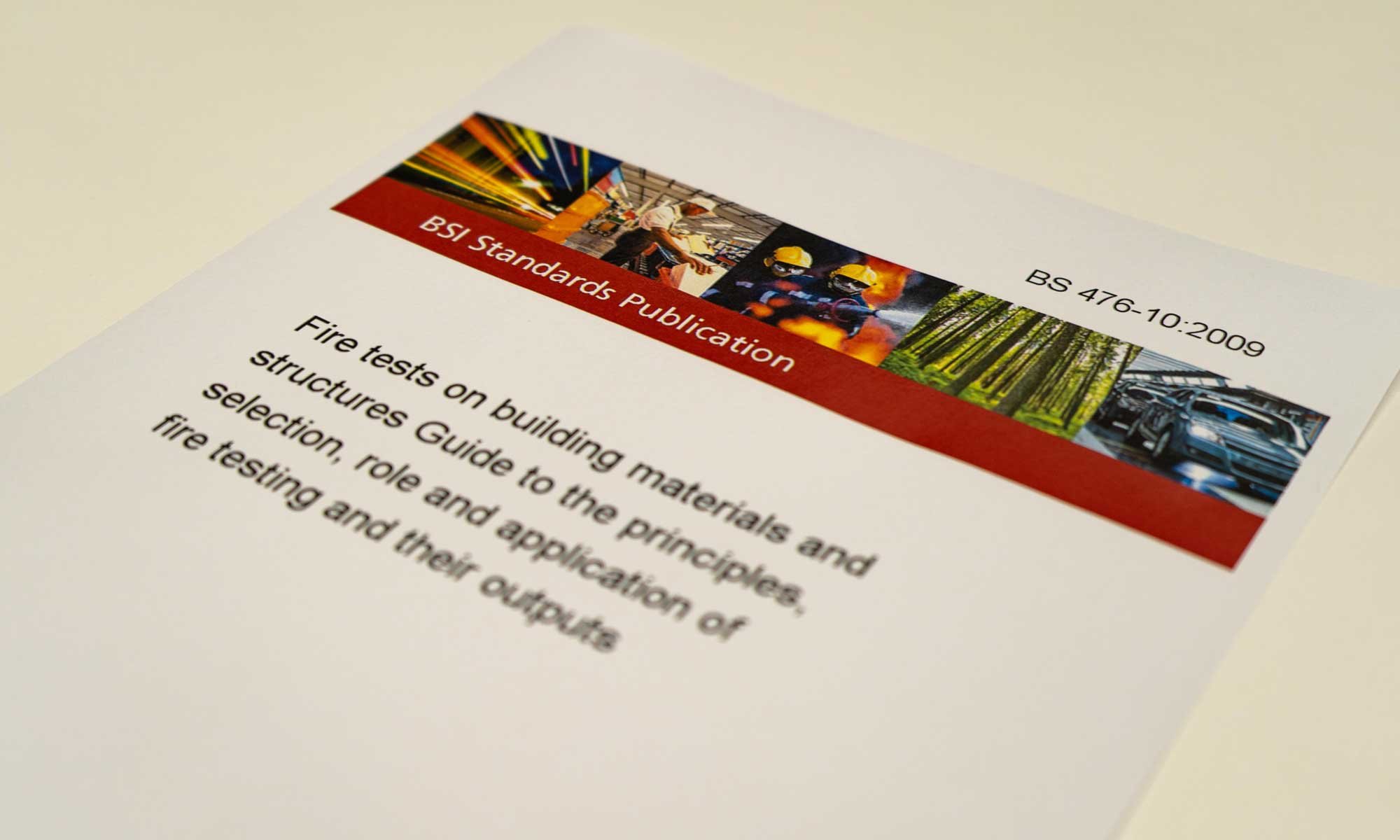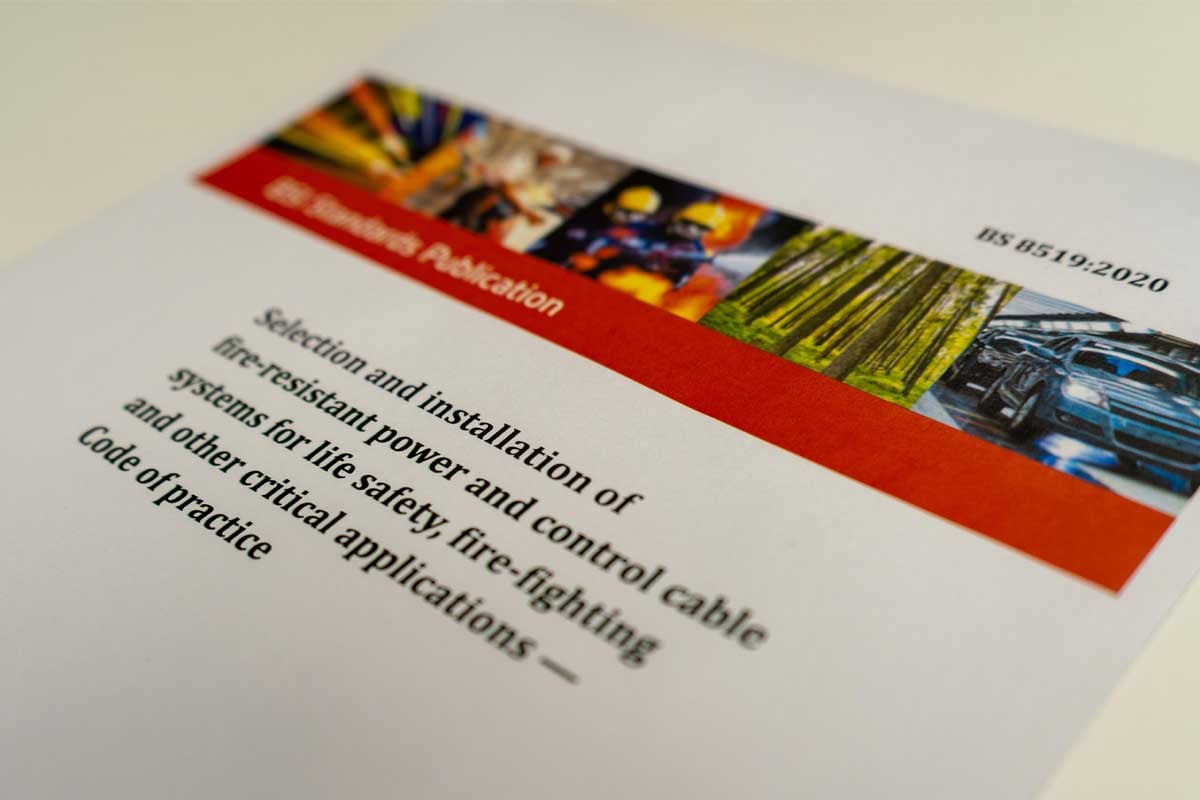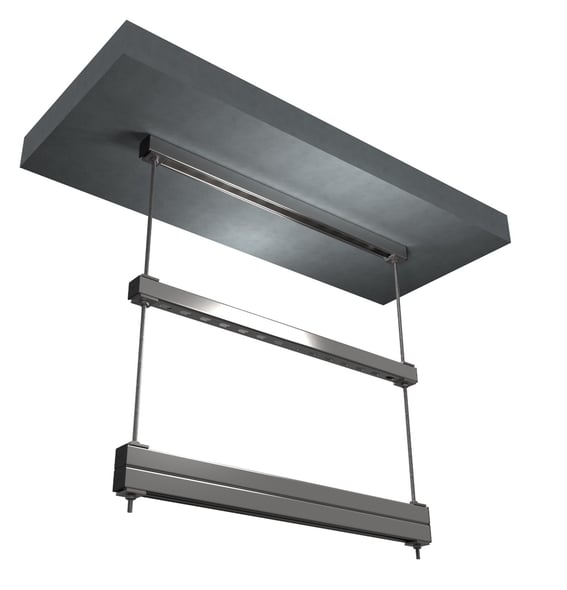“Is this bracket fire-rated?”
Above is a question we often hear in M&E; but it doesn’t seem like those who’ve asked it are aware of what they’re asking, to no fault of their own.
It’s safe to say that the terms ‘fire-tested’ and ‘fire-rated’ have been thrown around loosely and used interchangeably by M&E manufacturers, causing confusion amongst customers. Our aim is to eliminate that confusion.
Unfortunately, it’s easier said than done. There’s no straight answer as there are no test standards or guidance on fire testing that consider supports and fixings as a single system.
Let’s delve into this further, shall we?
- What does the term ‘fire-rating’ mean?
- Why can't a fire test based on BS 476 time/temperature ‘fire’ curve be relied upon?
- What standards are available?
- What does the term ‘fire-tested’ mean?
- What should you do?
What does the term ‘fire-rating’ mean?
Generally speaking, “fire-rating” means the way in which a product is rated & tested according to a particular standard.
However, in the absence of a harmonised fire-rating standard for supports & fixings as a single system, many manufacturers tend to use the BS 476 fire curve to test their product, thinking it’s now “fire-rated”.
Unfortunately, it is not sufficient for fire rating because it only paints half the picture.
At best, testing a product in accordance with the BS 476 can determine the time and temperature a specific component can withstand, as it was intended for.
But, it should be supplementary to other standards for different products/applications, as each product reacts differently even to the same exact temperatures and durations – but these standards don’t exist yet!
The only other harmonised guidance or code of practice is BS 8519, which is specific to fire-resistance power & control cable systems; not ‘pre-manufactured channel support systems’.
Therefore, you’d be making a false claim if you say your product is fire-rated!
Why can't a fire test based on BS 476 time/temperature ‘fire’ curve be relied upon?
Many M&E contractors are now recognising that a standard fire 'curve' (ISO 834 based curve) isn’t comprehensive enough to determine the fire performance of a particular product or component as it doesn’t emulate what would really happen in a fire. There can be several manufacturers all following BS 476 but achieving different results as each manufacturer will test different parameters (service loads etc.) Next time you see the word ‘fire-rated’ being used to describe a product, ask whoever used it, ‘rated according to what standard? Because there isn’t one!’. Or at the very least, ask under what temperature, what loads, and for how long was it tested? At minimum, what is the weight being put on it during the test and how many tests did you under how many different loads? The fire curve alone can’t answer that.

Fig 1 - (ISO 834 based curve included in BS 476)

What standards are available?
Now, you may ask, if the fire curve isn’t good enough, then what should you test in line with? Good question. The next stage up is standards that determine fire testing. Here’s the thing, though: there’s only one! Your closest possible option is the “BS 8519:2020 Selection and installation of fire-resistant power and control cable systems for life safety, fire-fighting and other critical applications” code of practice”.
This standard sets out fire-testing regimes for cable containment in particular, cable tray, basket, ladder, etc. However, it still doesn’t account for how those systems are being supported i.e. the support brackets that hold them up. All it does is set out how specifically the cable management system, such as a run of tray, reacts to fire, what temperature it can withstand, and how long before it deforms and fails.
But realistically speaking, you can’t have a cable management system without a support bracket holding it up – the two go hand in hand, which renders the standard almost void without the additional testing of support brackets and all other components (anchors, connections, etc.).
There are endless variables to think about when it comes to supporting cable containment systems. Think of it like a tier of product groups – starting from the cable containment onwards, the further down you get, the more variables to take into account.
On top of that, cable management systems have certain properties and attributes while support systems have completely different ones, so they can’t be tested the same way. Even if the standard said how the cable management system should be supported when tested, it’s only demonstrating that the system will perform to x temperature for x long under x circumstances. There’s nothing that indicated the support bracket will also perform to that level; that’s not what it’s concerned with.
And that’s where the need for a standard that specifically sets out the requirements of a fire test (of all kinds of products) lies to constitute a fire rating.
BS 8519 does give us a theoretical calculation to determine the maximum amount of stress allowable within the drop rod in order to achieve a desired time rating under fire conditions.
While, yes, at the most basic level of detail it can give you some indication of how something will hold up in a fire, in reality, it doesn’t go into enough depth. And with the way regulations around fire are evolving in our sector, the application of real-world scenarios is imperative for a true test.

What does fire-tested mean? / How do you test for fire?
Quite simply, as of now, anybody can say something is ‘fire-tested’ based on their subjective idea of what a test means or should include. Really, you can put something through whatever you think is sufficient and call it ‘fire-tested’.
If you’re only concerned with having a test then as mentioned the fire curve is the best option because it would be independently tested at a relevant test facility to provide the test data it was intended for - clarifying the 'fire resistance' of a component.
However, the fact remains there is no test standard to refer to or to determine whether the product has passed or failed the “fire test”! So, this term is also misused. A product may have been ‘tested’ and/or ‘rated’ for 3 hours, but it may have only been at 120°C – you cook lasagne at a hotter temperature than that! 🤭 While there’s no framework to follow when it comes to a more thorough test, using common sense, it’s clear that this wouldn’t paint a real picture of how something will perform in a real fire.
If there was a standard, it should outline these variables, but as there isn’t, it’s up to each individual manufacturer to decide what they’ll deem “tested” – and that’s the crux of the problem.
When the two above terms are used, often what is actually meant by them is ‘𝐟𝐢𝐫𝐞-𝐫𝐞𝐬𝐢𝐬𝐭𝐚𝐧𝐜𝐞’. If a product can withstand fire for a specified period of time at a given temperature, that doesn’t mean it’s fire-tested or rated, but rather it has fire-resistance up to x minutes and x degrees.
In an attempt to revise this, organisations such as BESA and BEAMA currently have working groups looking at the need for a standard that sets out the fire-testing parameters for M&E supports.
What should you do?
All in all, what we hope you’ve taken from this is if a manufacturer claims a product of theirs is fire-rated solely because they’ve carried out a test (that they came up with themselves, mind you!), you’ll stop and question it, because it can be quite misleading.
Often, they’ll leverage this ignorance and ‘hysteria’ around fire in M&E to their advantage and to accommodate their commercial bias, claiming a product to be fire-rated when in fact they’ve only tested it. If this does happen, challenge them with “what standard is it rated to?”.
As a matter of fact, even if they only claim it to be fire-tested, you should still scrutinise what that means to them. If the manufacturer is asked to provide the information about the fire test, including the temperature, loads, and duration of the test, then that might satisfy the Tier 1 contractor’s demands even without a literal ‘fire-rating’.
In real-life scenarios, a support bracket has a limit to the loads and temperature that it can handle, and for how long. The load capacity is therefore affected but to different extents depending on the type of fire; which is why multiple variations of a test should be done. The fire curve alone doesn’t answer all of the questions nor tie up all the loose ends.

If you talk to the technical department, and they’ve done independent testing and provided evidence that the product has been tested according to BS 476 for a specified period of time, you’d be minimising the risk significantly (although it can’t be completely eliminated). You’ll have done your due diligence with what you have at your disposal, and therefore have increasing confidence in the performance of the product (to support everything securely) by gathering this information.
Conclusion
At the end of the day, the manufacturer should be educated enough on the topic to be able to pass the information in the supply chain that, at present, there isn’t a standard as such to fire-rating according to, but to still come up with a satisfactory test (on their products) and data in its absence. You never know, it will likely still suffice.


